Nonprofit leaders face unique challenges in today’s world. From financial and broader economic uncertainty to changing policy and evolving societal needs, the pressure to deliver meaningful change during a period of insecurity can feel immense. Within these challenges lie decisions for leaders to make as they determine how to lead in new ways.
Below, our Nonprofit Practice Partners share strategies to help nonprofit leaders guide their organizations during a period of ongoing change and ambiguity.
Reinforce Purpose to Keep Your Team Engaged – Renato Amador, Partner
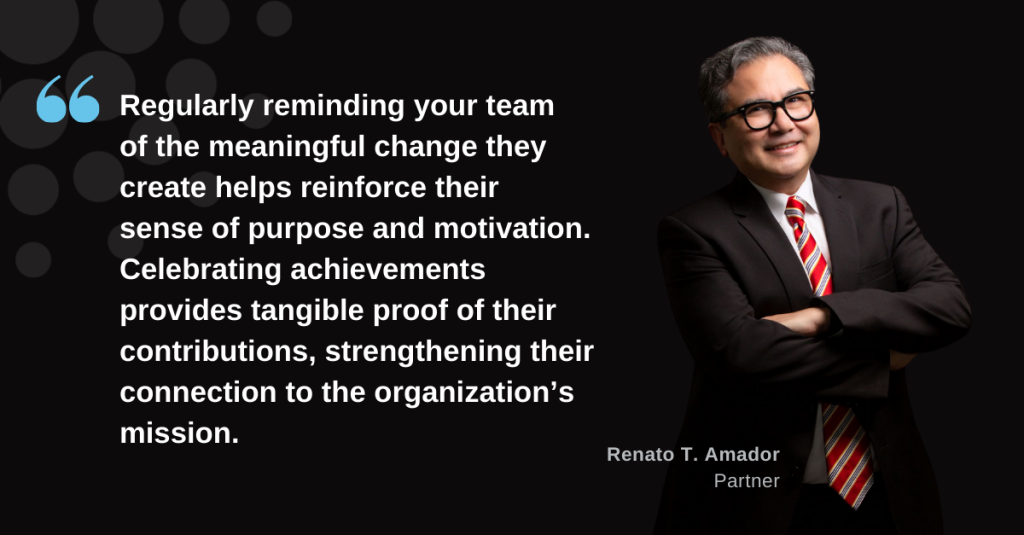
Nonprofit leaders play a crucial role in supporting their teams’ mental health and well-being, especially during challenging times. Regularly reminding your team of the meaningful change they create helps reinforce their sense of purpose and motivation. Celebrating achievements provides tangible proof of their contributions, strengthening their connection to the organization’s mission. Open communication is equally important, creating a safe space for honest conversations about struggles, promoting understanding, and ensuring team members feel supported.
Keeping staff motivated and engaged requires a commitment to professional growth. Investing in training and mentorship opportunities – using internal and external resources – demonstrates that leadership values career development. Providing clear pathways for advancement enhances skills and boosts retention by reinforcing each team member’s future within the organization.
Lessons from the early days of the pandemic remain relevant for today’s nonprofit leaders. The uncertainty of that period forced leaders to make critical decisions with limited information, pushing organizations to test new ideas and adapt quickly. Forward-thinking leaders can continue to embrace flexibility by evaluating new operating models, adopting commercial approaches to development, and exploring alternative funding strategies, like venture philanthropy, to create sustainable revenue streams.
Share a Clear Vision Without Overpromising – Tom Berray, Managing Partner, Washington, D.C.
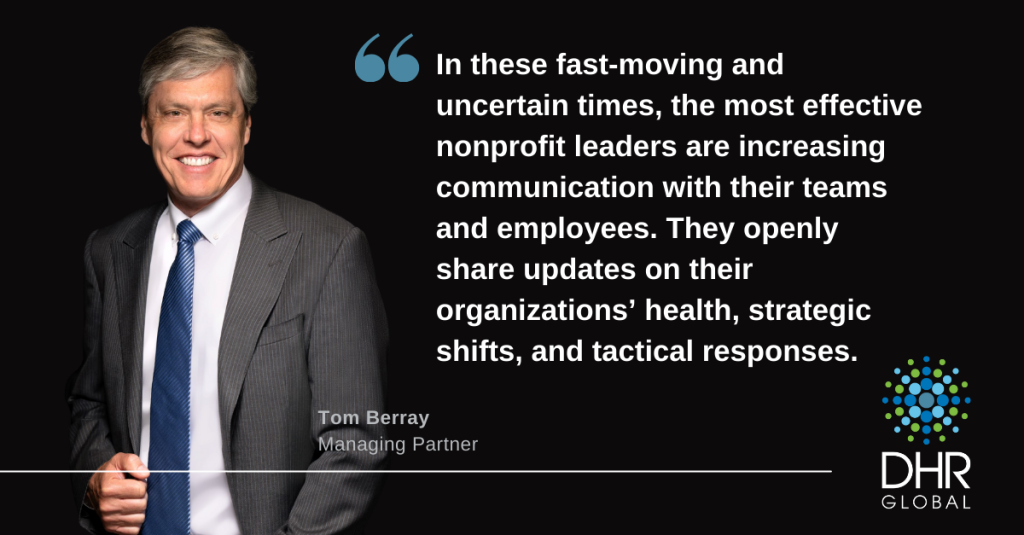
In these fast-moving and uncertain times, the most effective nonprofit leaders are increasing communication with their teams and employees. They openly share updates on their organizations’ health, strategic shifts, and tactical responses. They also prioritize direct check-ins, listening firsthand to gauge morale rather than relying solely on secondhand reports. Most importantly, they provide a clear vision and framework for moving forward – focusing on what they can control while avoiding promises they may not be able to keep.
Support Long-Term Creativity for Lasting Success – Michele Counter, Partner
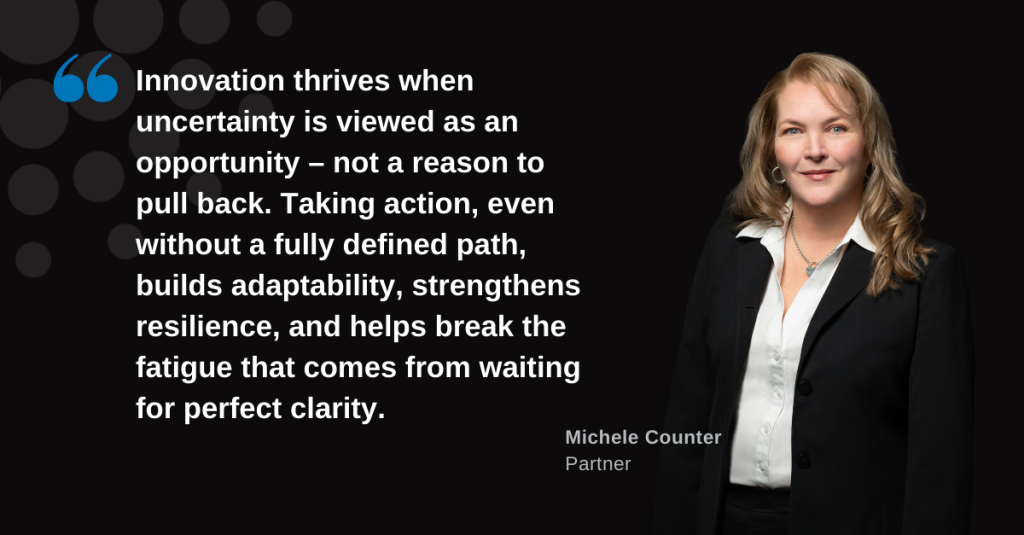
The ongoing uncertainty of today’s economy and shifting federal policies can be exhausting. So how do nonprofits keep moving forward? If there’s one thing I’ve learned from clients during and after the pandemic, it’s this: Innovation thrives when uncertainty is viewed as an opportunity – not a reason to pull back. That mindset takes courage – yes – but also clear communication of your organization’s values, mission, and risk tolerance. In uncertain times, encourage your team to approach their work and goals with creativity. Taking action, even without a fully defined path, builds adaptability, strengthens resilience, and helps break the fatigue that comes from waiting for perfect clarity. Sustaining creativity over the long term equips your team to meet challenges head-on and seize emerging opportunities.
Communicate Clearly and Stay Flexible in Tough Times – Amara Kea, Partner
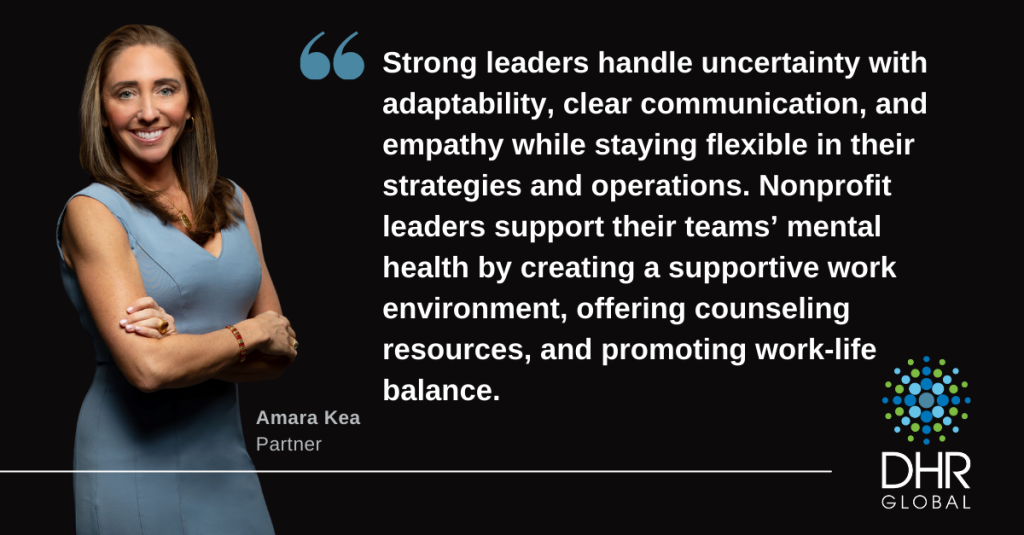
Strong leaders handle uncertainty with adaptability, clear communication, and empathy while staying flexible in their strategies and operations. Nonprofit leaders, in particular, support their teams’ mental health by creating a supportive work environment, offering counseling resources, and promoting work-life balance.
Keeping staff engaged during difficult times can be challenging, but many organizations maintain high retention through verbal recognition, professional development opportunities, and financial incentives when appropriate. Leaders who learned to prioritize employee well-being during the pandemic must carry those lessons forward, ensuring their teams remain resilient in today’s uncertain environment.
Repeat Key Messages for Clarity – Sara Lundberg, Managing Partner, North America
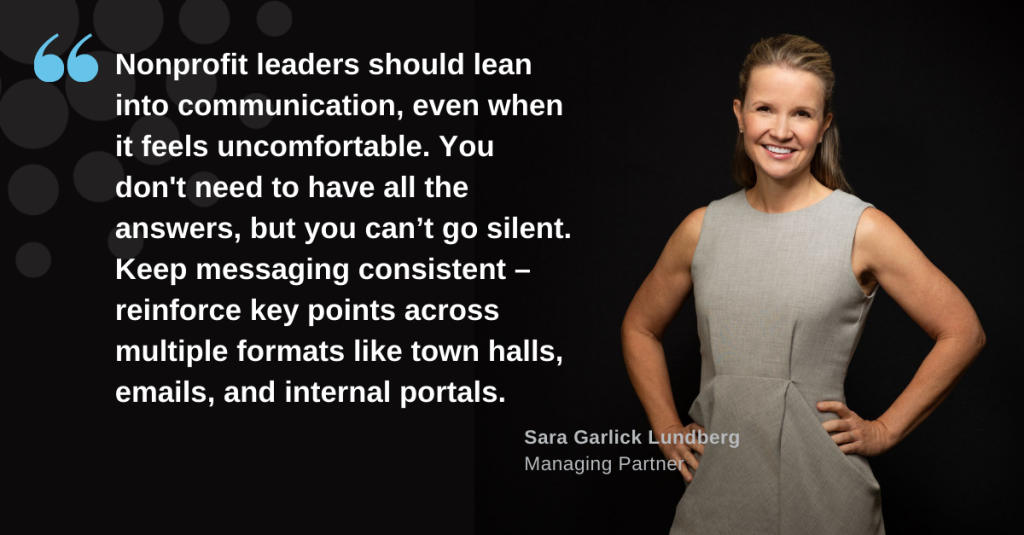
During uncertain times, many leaders hesitate to communicate. But when leaders withdraw, employees disengage and create their own narratives. Nonprofit leaders should lean into communication, even when it feels uncomfortable. You don’t need to have all the answers, but you can’t go silent. Keep messaging consistent – reinforce key points across multiple formats like town halls, emails, and internal portals.
For many, today’s uncertainty feels like the early days of the pandemic, when external factors made decision-making difficult. The most effective leaders stayed connected, communicated consistently, and leaned on their senior teams to adapt. Some used the challenge to innovate, strengthen their organization’s case for support, and upskill key staff. Many found gaps in leadership that resulted in changes to the senior team. This year will be a test for nonprofit leaders, and my hope is that eventually, they emerge stronger than before.
Lead With Empathy to Build Trust Through Change – Kris McFeely, Partner
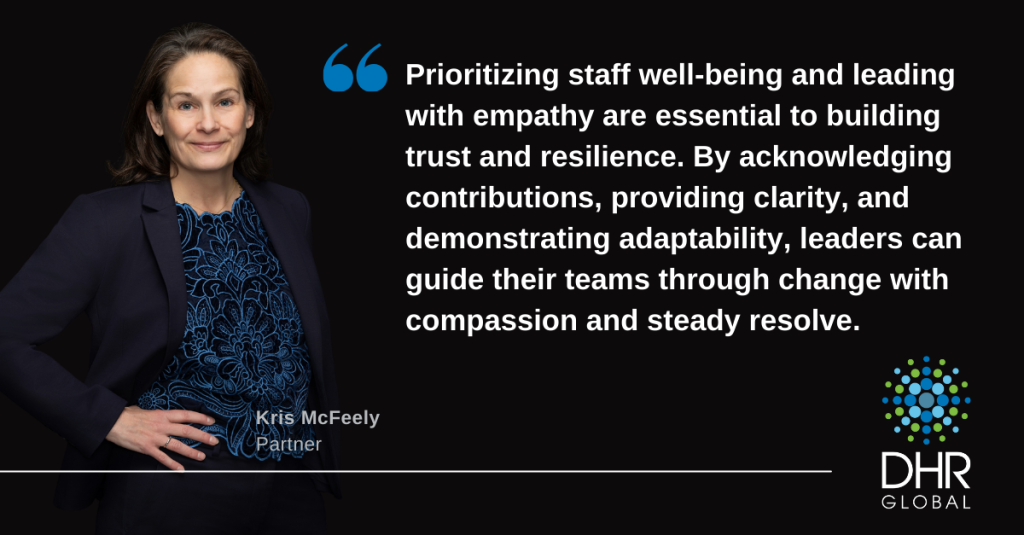
During difficult times, nonprofit leaders play a vital role in offering support and stability to their teams. I’ve seen leaders succeed by creating a culture rooted in transparency, empathy, and shared purpose. This includes communicating openly, making mission-driven decisions, involving staff in change, and managing resources thoughtfully. Prioritizing staff well-being and leading with empathy are essential to building trust and resilience. By acknowledging contributions, providing clarity, and demonstrating adaptability, leaders can guide their teams through change with compassion and steady resolve.
Creating Stability and Growth in a Changing World
In the current climate, embracing adaptability, maintaining transparency, and investing in team development are essential practices for nonprofit leaders. Implementing these approaches can improve workforce engagement and alignment with the organization’s goals, ultimately ensuring continued success.
Learn more about DHR’s Nonprofit Practice Partners as well as our strategic talent advisory solutions.
Mission-driven Leaders for Mission-driven Organizations
Nonprofit executives are leading through a transformative era, embracing change with resilience and foresight. DHR’s Nonprofit Practice empowers organizations to harness these visionary, results-driven leaders to reach their goals.
